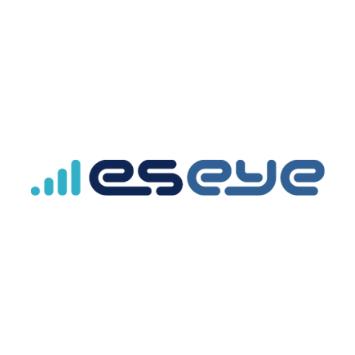Blogs
21 December 2023
Reading Time: 3 mins
How is IoT Performing in the Supply Chain and Logistics Market?
Efficiency gains and roaming headaches: The 2023 State of IoT Adoption in Supply Chain and Logistics
Blogs
21 December 2023
Reading Time: 3 mins
Efficiency gains and roaming headaches: The 2023 State of IoT Adoption in Supply Chain and Logistics

Eseye
IoT Hardware and Connectivity Specialists
LinkedInWhile every sector surveyed in Eseye’s third annual State of IoT Adoption research encounters challenges with gaining the high degree of connectivity they need, this is a particular pain point for businesses in the supply chain and logistics sector. In this case, the assets – and the devices that connect them – are almost constantly on the move, with frequent crossing of geographical borders.
The use of intelligent sensors and smart devices has great potential to integrate and streamline the processes involved in the transportation of goods, as well as to improve security. For instance, a truck can continuously share data on its location and the status of the cargo in transit, enabling logistics to be monitored and managed in real time. Indeed, more than half (58%) of respondents from the supply chain sector report that IoT has enabled their business to create operational efficiencies.
This is reflected in their plans for the future, with 85% intending to increase the size of their IoT estates in the next two years – the highest of all the five industries we surveyed. Currently, 55% have deployed between 1,000 and 10,000 devices, while 38% have small-scale IoT deployments with 500 to 1,000 devices in the field.
To fuel this expansion, 85% of respondents are expecting to increase their budgets, again the highest percentage among all the sectors. 34% are planning to increase budgets by double!
The mobility maze
IoT devices in supply chain and logistics applications are rarely static, and maintaining near to 100% global connectivity is unsurprisingly cited as “very important” by 77% of respondents. However, half (50%) admit that in reality they are only managing to achieve between 71-90% connectivity levels. This gap is particularly concerning for supply chain use cases that demand real-time tracking and telematics data.
It’s possible that businesses in this sector are settling for second-best connectivity in an attempt to control costs. 98% of respondents said cost was important in their decision-making process when selecting a provider. But compromising quality for cost is false economy for an industry that demands such a high level of resilience.
The respondents to our survey appear to be well aware of this, with 78% reporting that using low-cost connectivity providers fail to deliver value in the long term; higher than the average of 71% across all five sectors. This suggests that they may have been ‘bitten’ by opting for cheap solutions in the past. By collaborating with the right partner, the 100% target is certainly achievable.
Some of the hurdles that get in the way of achieving optimal coverage are out of everybody’s control. Bans on permanent roaming fall into this category.
The ability to localize is crucial
Many countries and mobile network operators (MNOs) are implementing restrictions that prevent IoT devices from permanently roaming onto their home networks. Brazil, Turkey, Nigeria and some MNOs in the US have prohibited the practice altogether.
It’s essential that businesses that are deploying devices into these regions can futureproof their IoT projects by localizing connectivity to home networks in each market. Those that don’t may find themselves being stung by high roaming charges or – worse – that their devices get disconnected from the network as they cross borders.
We have spent more than a decade forging special agreements with operators, and creating the AnyNet Federation which gives our customers access to more than 700 operators in 190 countries and enables them to localize their IoT devices.
Security squared
The security of IoT devices was cited by 18% of respondents in the supply chain and logistics sector as their greatest concern. Due to the constant movement of these devices in the supply chain, the data they collect, process, and transmit becomes more exposed to both physical and cyber security threats.
Security needs to be built into every layer of the IoT deployment – from the hardware and the network right up to the cloud. If the company lacks the right expertise in-house, they should seek a partner that has the capabilities to embed the appropriate protective measures at every stage of the project.
The findings from our IoT research highlight that IoT success within the supply chain and logistics market is being jeopardised. While deployments are set to increase, and companies are realistic about the additional investment they must commit to support this growth, a failure to prioritise high quality, ubiquitous global connectivity will hold them back. Only by paying sufficient attention to achieving the right blend of network capabilities, device optimisation and professional service expertise will the sector achieve lasting value from its IoT initiatives.
Discover the results of our largest State of IoT Adoption survey to date with insights into the challenges and opportunities that are hindering and helping IoT adoption IoT projects in the supply chain industry.
Download report
Eseye
IoT Hardware and Connectivity Specialists
LinkedInEseye brings decades of end-to-end expertise to integrate and optimise IoT connectivity delivering near 100% uptime. From idea to implementation and beyond, we deliver lasting value from IoT. Nobody does IoT better.
Let our experts test your device for free. Receive a free SIM kit and speed up your IoT deployment with expert insights and seamless connectivity.